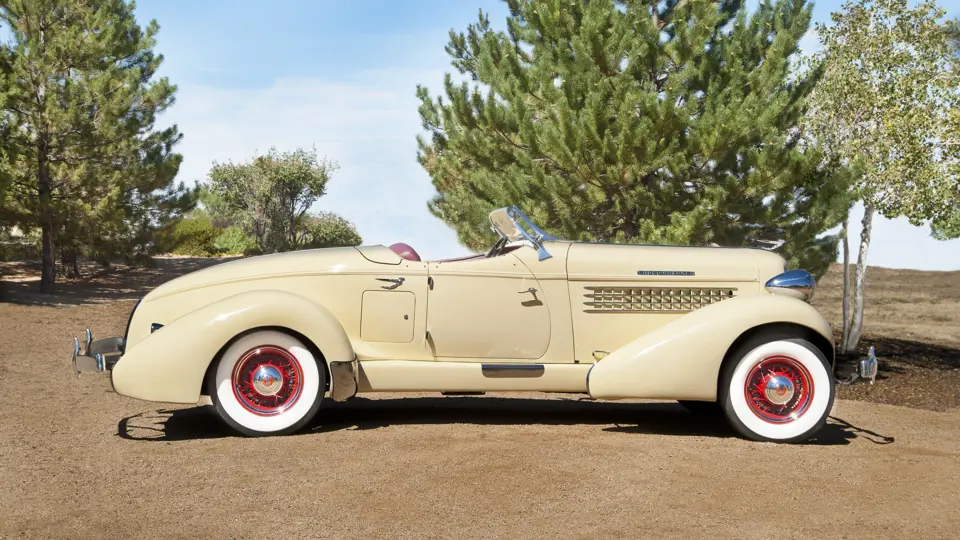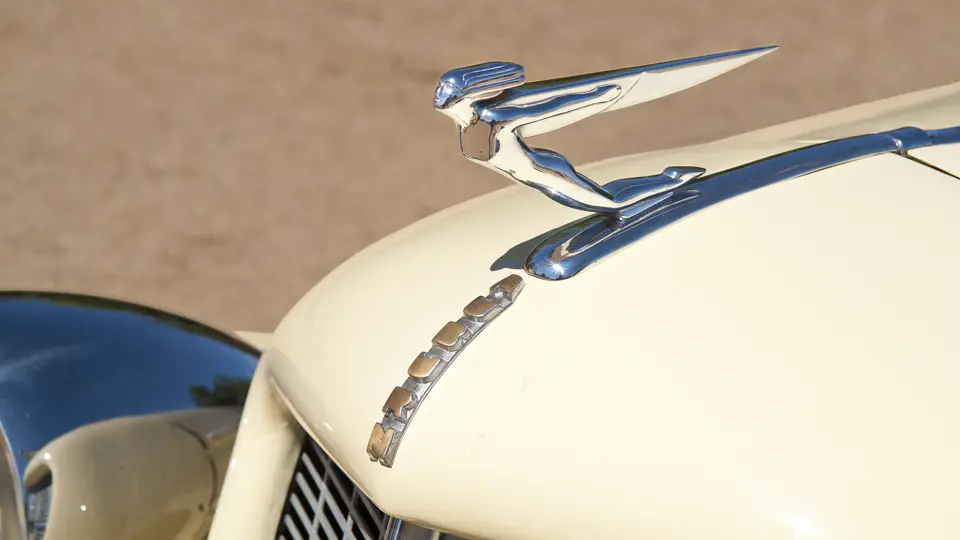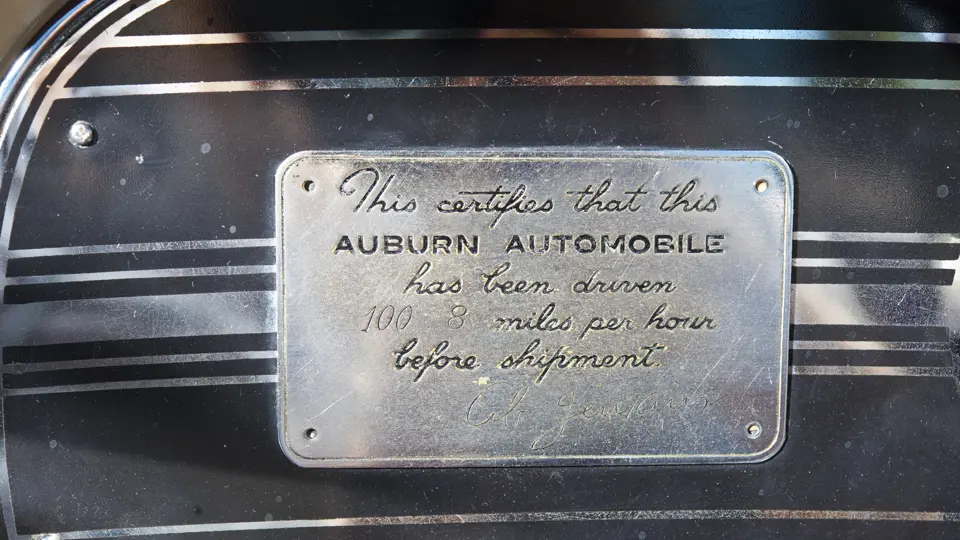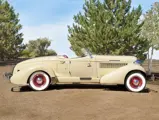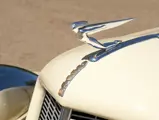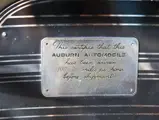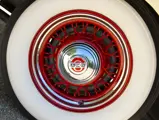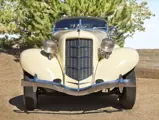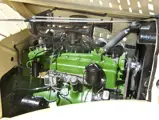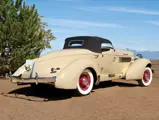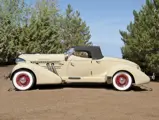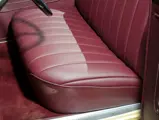150 bhp, 280 cu. in. displacement inline eight-cylinder engine with Schwitzer-Cummins centrifugal supercharger, three-speed manual transmission with Columbia dual-ratio rear axle, solid front and rear axles with semi-elliptic leaf springs, and four-wheel hydraulic drum brakes. Wheelbase: 127 in.
• Ex-Luigi Chinetti and Rosso Bianco Museum
• Recent, extensive, ground-up restoration
• Iconic and rare American performance car of the Classic Era
In the days when Bugattis crossed France and 4-1/2-litre Bentleys tore through the British countryside, the American equivalent was the Auburn Speedster. Auburn, Indiana’s Auburn Automobile Company revealed its first version of this dashing body style, inspired by a Duesenberg show car, for the 1928 model year and would offer variations on the theme through the end of production in 1936.
The 1935–1936 Speedsters were designed by the legendary Gordon Buehrig. Audacious even by the standards of their time, they featured curvaceous bodywork with a straight hood line shooting back from the radiator to a sharply vee’d windshield, down between pontoon fenders and over gently sloping doors, and descending in a graceful taper to the rear bumper. It was this distinctive rear design, elegantly outlined by chrome and striping, that gave the speedster its everlasting nickname “the boattail.”
Underneath, the Speedster shared the same exciting mechanicals as other supercharged Auburn models. The glistening chrome side exhaust heralded the presence of a Schwitzer-Cummins blower, which boosted horsepower of the Auburn straight eight to 150 from a normally aspirated reading of 115.
The 150 horsepower was sent to a Columbia dual ratio rear axle, standard equipment on the supercharged models, which provided two ratios for each gear, one low and one high. The ratios could be changed as often as desired, while at very low speeds or at a stop, by moving the switch in the center of the steering wheel. This provided the supercharged Auburn with much greater flexibility, making it a true “driver’s car,” ideal for both purring through crowded cities and sweeping down country lanes.
Each Speedster bore on its dashboard a plaque inscribed, “This certifies that this AUBURN AUTOMOBILE has been driven 100.8 miles per hour before shipment.” It was signed by David “Ab” Jenkins, the speed record driver who achieved some of his greatest successes at Bonneville behind the wheel of a late Auburn Speedster. Of course, the plaques were merely factory decoration installed on the production line. On the other hand, no one who has driven these cars since has ever complained about a lack of speed!
The car offered is one of a believed total of about 150 last generation Speedsters built, and it is an authentic example, with its original frame and body, and it still carries its original chassis tag applied by the factory in 1935.
In an article in the March 1960 issue of the Auburn Cord Duesenberg Club Newsletter, then-owner Doug Doyle, of Oregon, related this car’s history, including an enticing but thus far unproven suggestion, that it was shown at the New York Automobile Show. Doyle recounts that the Auburn was purchased new by a gentleman from Long Beach, California who used it until his passing several years later. It then passed through owners in California and Washington before Doyle acquired it in May 1957. He recounted that it had been restored by then-owner Hal Resch in 1950 and that the damaged original engine had been replaced with a new one supplied by the Auburn Cord Duesenberg Company, purveyors of the remaining Auburn factory parts stock.
In the 1970s, the Auburn was acquired in a trade by the legendary Luigi Chinetti, a talented pre-war racing driver who became the first United States dealer for Ferrari automobiles and later the distributor for the eastern half of the country, noted for his close relationships with wealthy clients and his personal friendship with Enzo Ferrari.
The car was sold by Chinetti Jr. in 1984 to the Imperial Palace of Las Vegas, and it went shortly thereafter to Peter Kaus for his Rosso Bianco Museum in Aschaffenburg, Germany, which at one time contained the world’s largest sports car collection. The Auburn was held in the museum until its dispersal in the early 21st century, at which time it was acquired by Ton Meijer for his daughter. When she fell out of love with the car it went to a prominent collection in Texas, from which the car was acquired by its present owner.
In the current ownership, the car underwent an extensive ground-up restoration, with emphasis on returning it to as close to original specifications, using as many original parts as humanly possible. Previous minor body damage was correctly repaired without filler and then refinished in a period-correct Ivory, while the interior was reupholstered in maroon leather with a complementing new black top fitted. Mechanically, the engine, transmission, brakes, and all other major mechanical components were fully inspected to ensure flawless operation. All of this work has been documented for the buyer’s satisfaction, and the car is reported to run and drive well.
An Auburn Speedster affords entry for its owner into a small and elite circle, those who have the opportunity to treasure one of the finest American performance cars of its era, and is one that can be shown with pleasure and driven home with ease. The car offered would provide its new owner with all those exciting opportunities, with the added bonus of a lively history that includes legendary collections and the monumental figure of Luigi Chinetti.




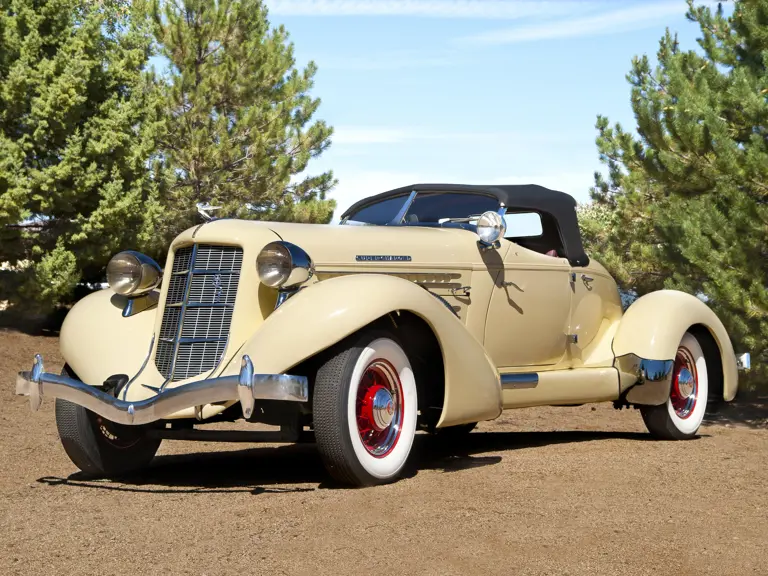
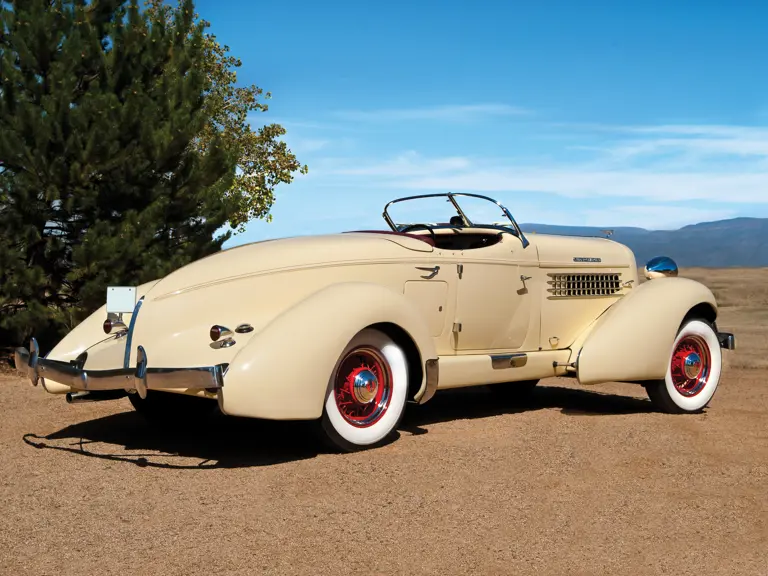
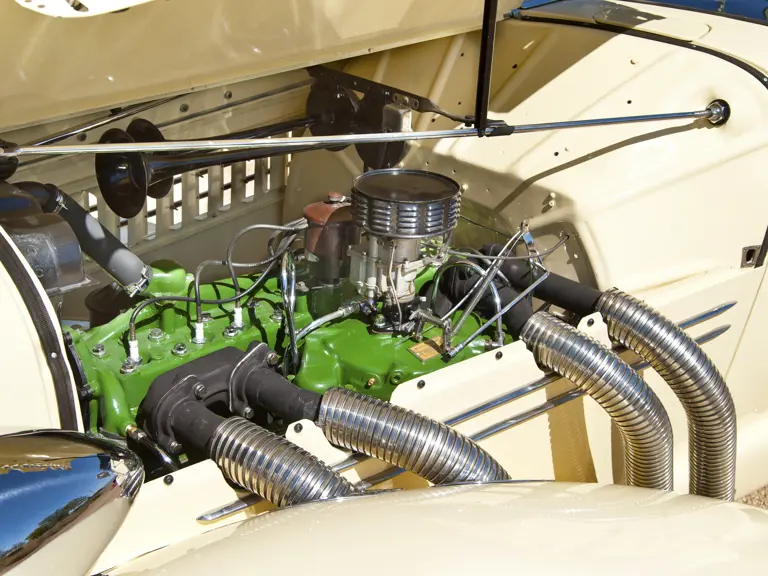
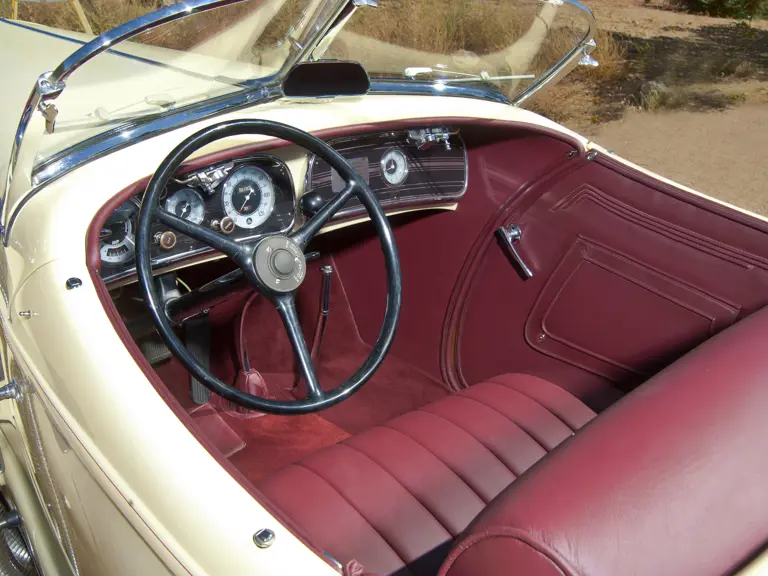

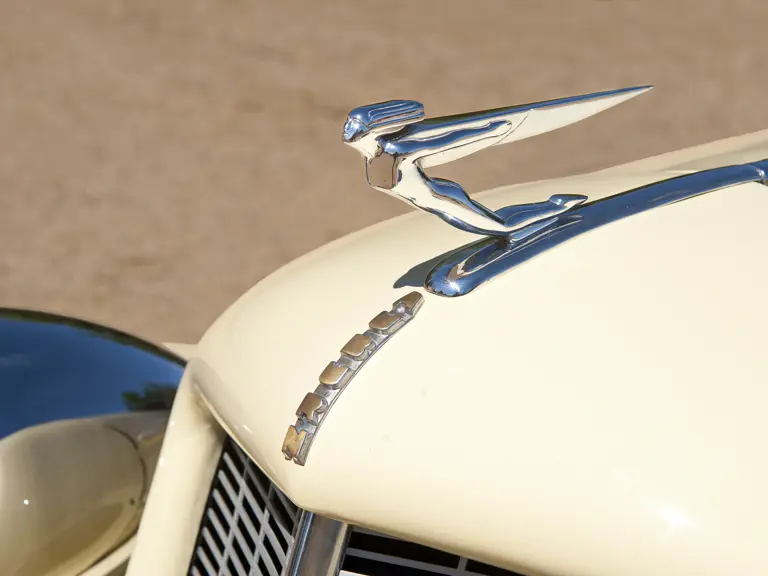
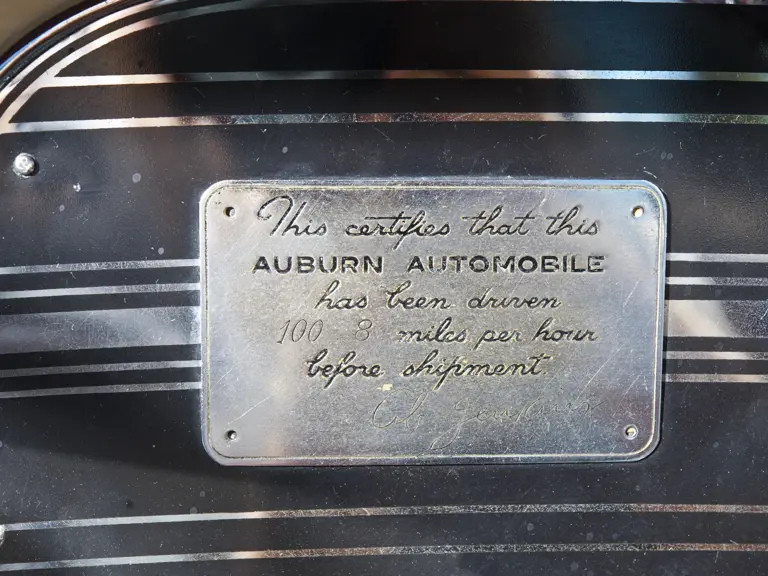
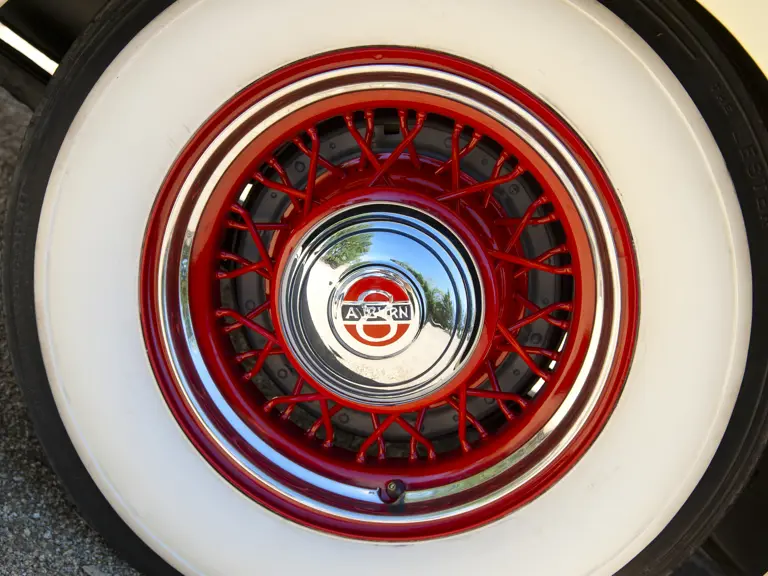
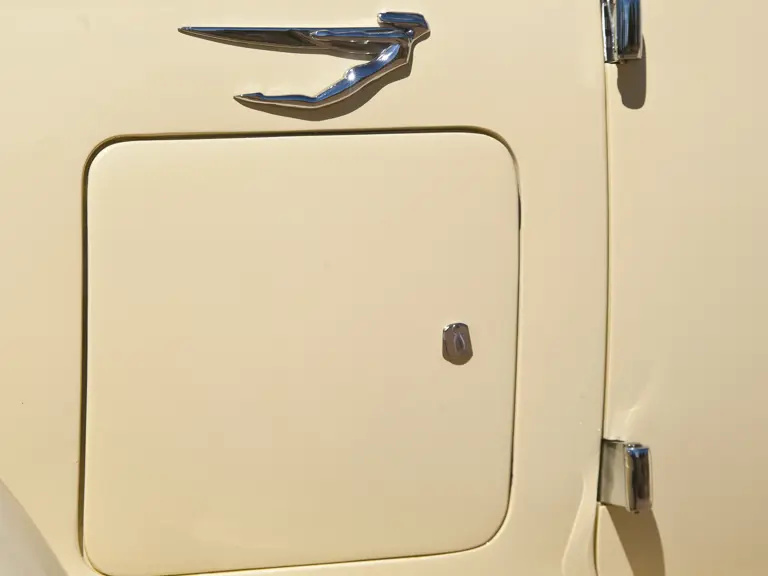
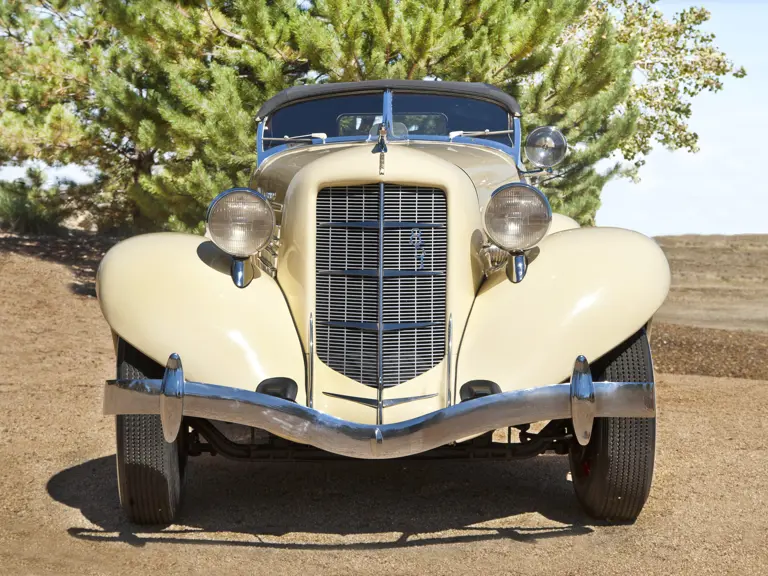
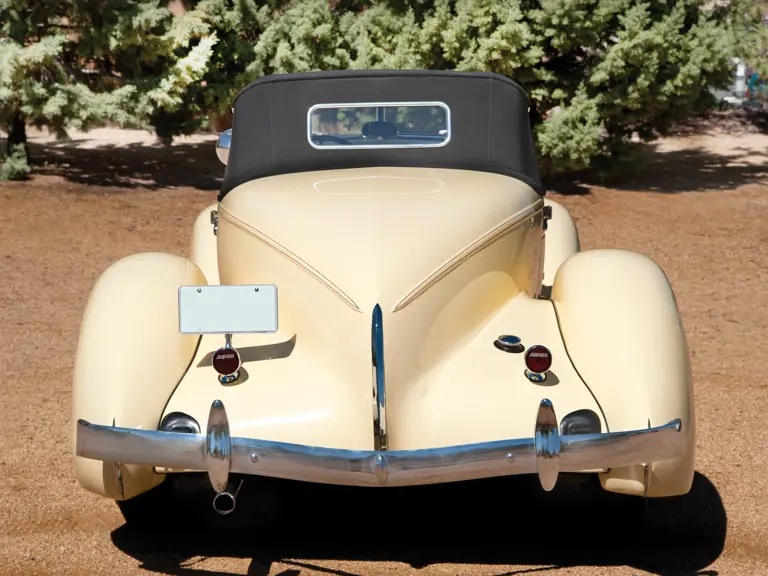
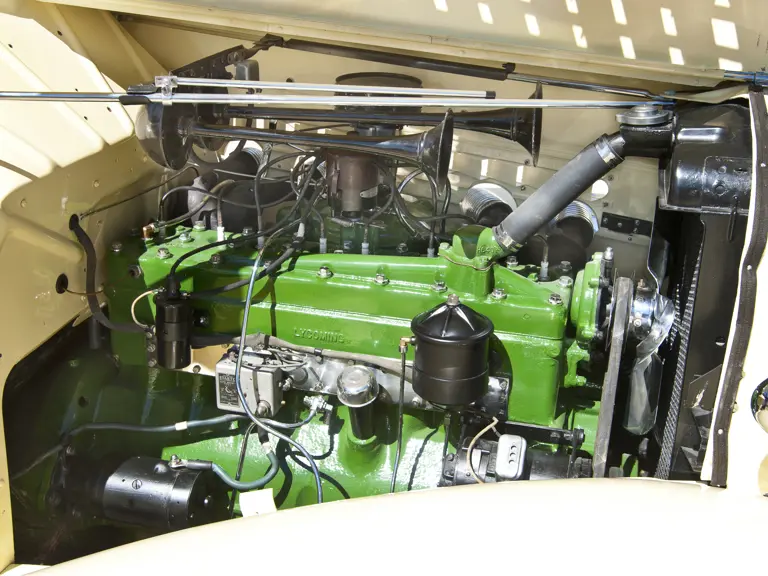
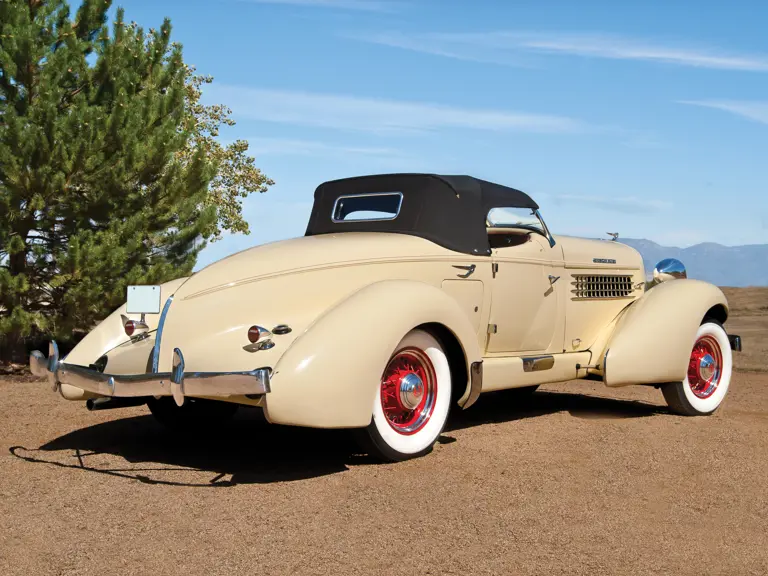


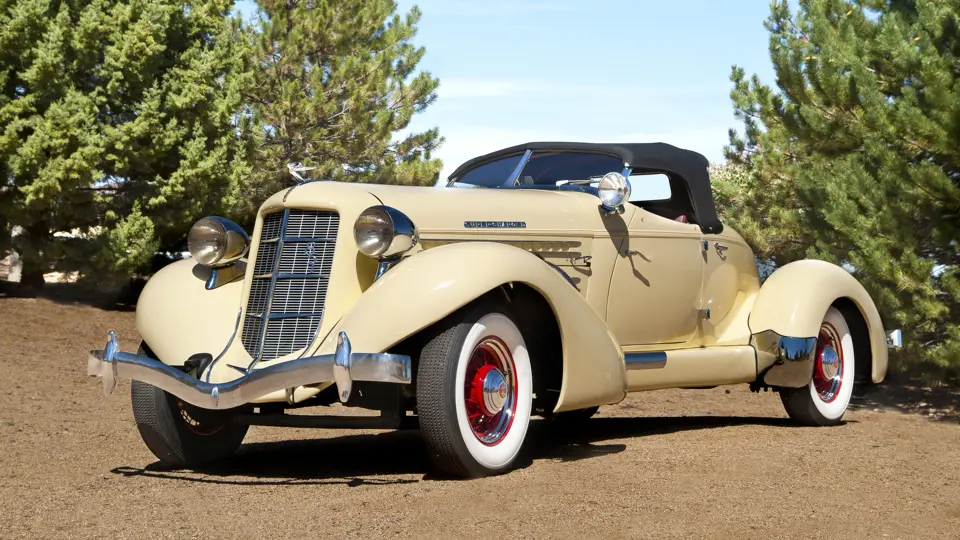
 | Phoenix, Arizona
| Phoenix, Arizona
